Samsun, one of the most important cities in the Black Sea Region, stands out with both its natural beauty and historical richness. Known for its critical role in the founding process of the Republic of Turkey, the city also offers various experiences to visitors with its beaches stretching along the coastline, green highlands, and cultural heritage. Being a city intertwined with the sea, Samsun is also an ideal destination for nature lovers, history enthusiasts, and travelers seeking tranquility.
The places to visit in Samsun are rich not only in the city center but also in the surrounding districts. From sites like the Bandırma Ferry Museum, which sheds light on the history of the Republic, to natural wonders like the Kızılırmak Delta Bird Sanctuary, there are many spots to explore across a wide spectrum. This city, which can be pleasantly visited in both summer and spring, offers an unforgettable travel opportunity with its preserved cultural structures and the natural beauty presented with the cool breeze of the Black Sea.
1. Şahinkaya Canyon Nature Park – Nature walks, boat tours, scenic viewpoints
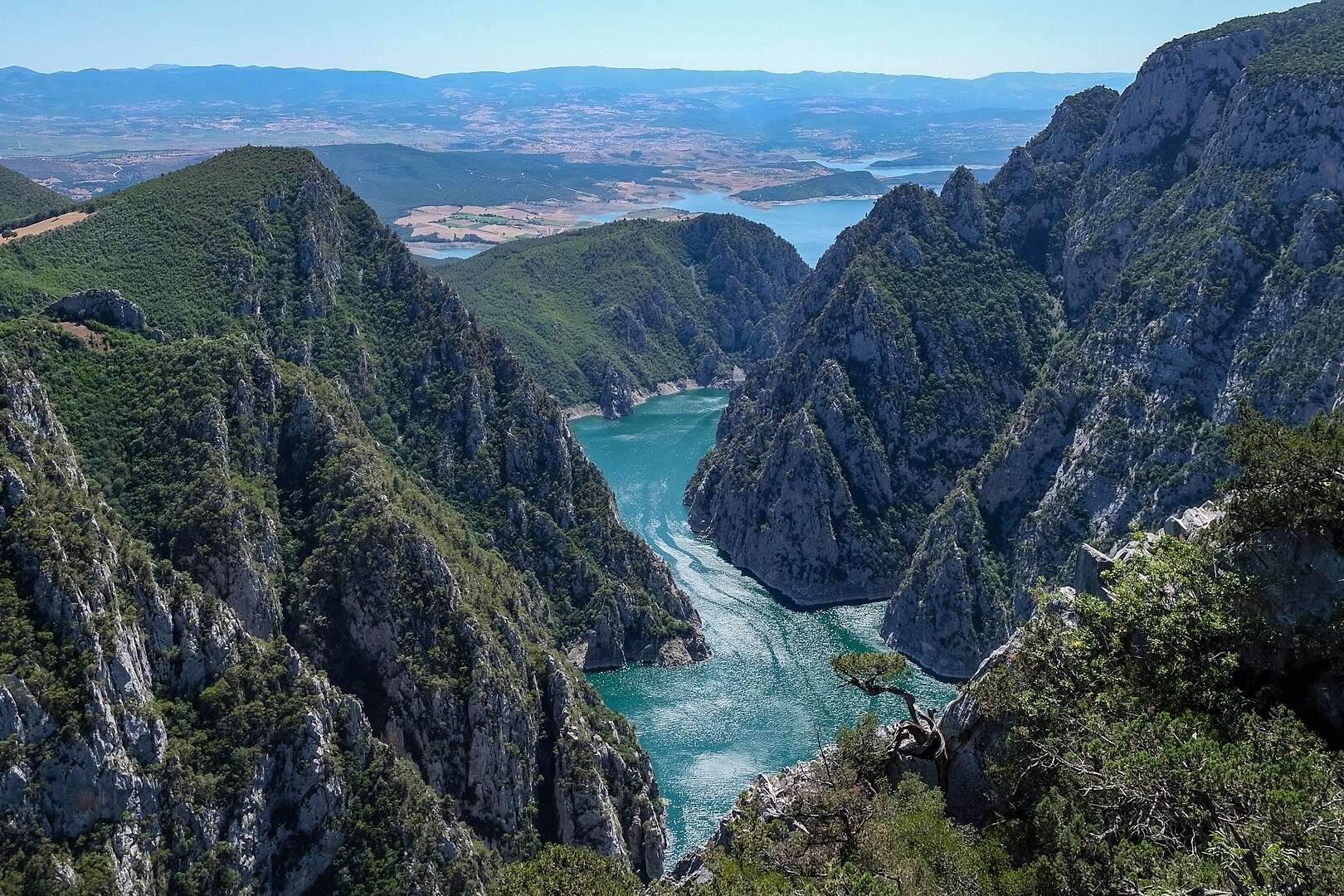
Şahinkaya Canyon Nature Park is located in the Vezirköprü district of Samsun, on the Altınkaya Dam Lake, and is one of the most impressive natural formations in Turkey. The canyon is approximately 1,500–3,250 meters long and about 324–340 meters high; with these features, it is considered the second-largest water canyon in the country. It was declared a “national tourism area” in 2012 and a nature park in 2015, thus being placed under protection for its natural and scenic value.
Within the borders of the nature park, there are arrangements such as walking paths, picnic gazebos, and recreational areas. The canyon can be explored via boat tours between the steep cliffs along the turquoise waters of the Kızılırmak River; during these approximately 40-minute tours, visitors can enjoy breathtaking views from the water’s surface. In addition, activities such as canoeing, camping, nature photography, and amateur fishing can also be enjoyed. The park is home to a variety of plant species, especially red pine and oak, and a rich wildlife including otters, hawks, foxes, squirrels, and roe deer. In short, Şahinkaya Canyon is a unique destination for both scenic views and nature-based activities.
2. Bandırma Ferry Museum – One of the symbolic sites of the War of Independence
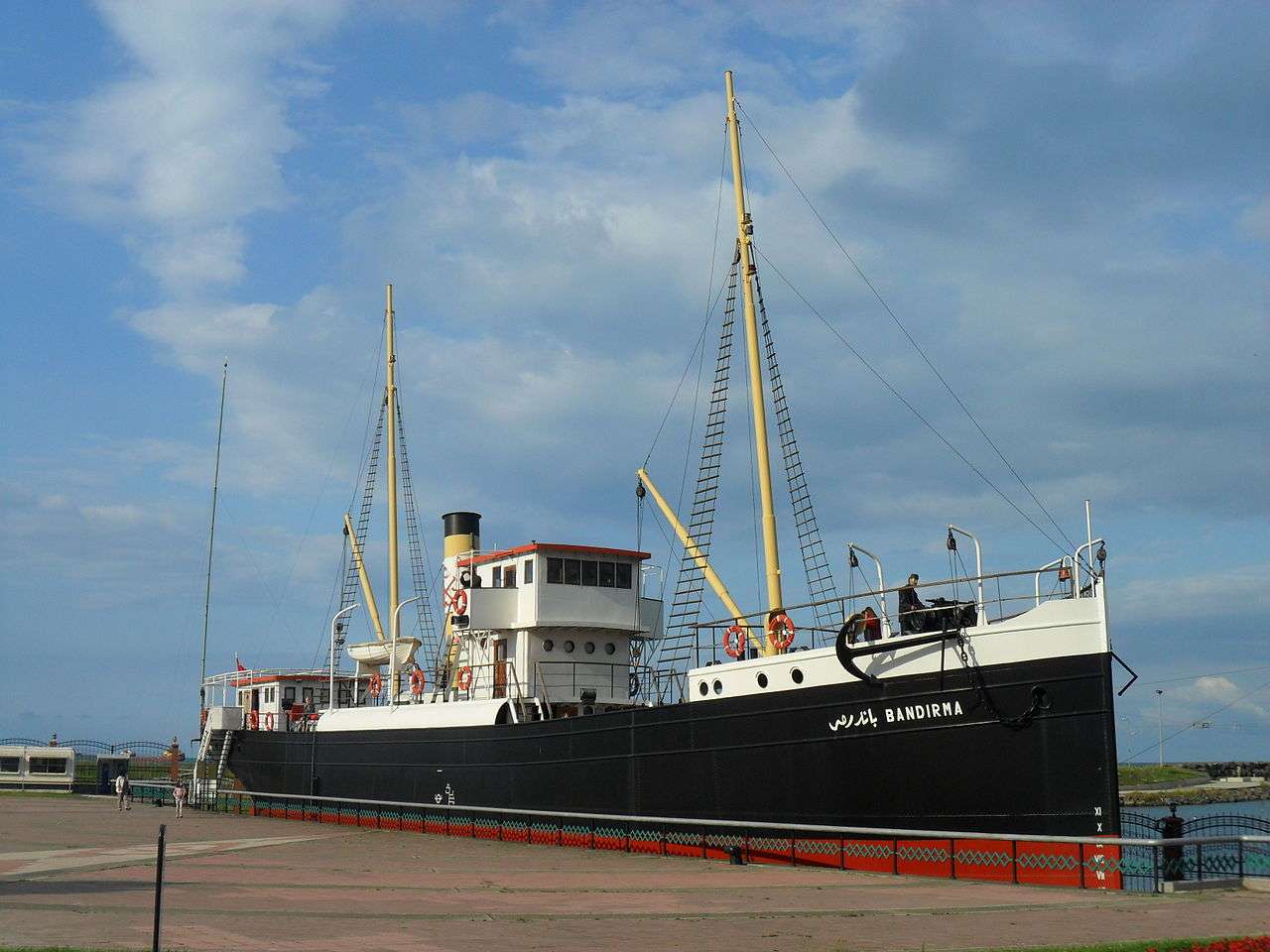
The Bandırma Ferry Museum is a unique open-air museum located in the Canik (or East Park) area of Samsun, featuring a full-scale replica of the historic ship that carried Mustafa Kemal Atatürk to Samsun on May 19, 1919. The ship was reconstructed in 2001 based on its original drawings and dimensions and was opened to visitors in 2003. It holds a symbolic place in the history of the Republic of Turkey as the vessel that marked the beginning of the War of Independence.
Inside the museum ship, visitors can see wax statues of Gazi Mustafa Kemal Atatürk and his staff officers, captain and crew decorations, a conference room, exhibition halls, and period-related artifacts. The surrounding open-air area expands the museum experience with features such as a panorama of the National Struggle era, ceramic reliefs, and a Martyrs’ Inscription. The museum hosts many local and international visitors; in the first half of 2023, it broke recent records by receiving 126,221 visitors.
3. Atakum Beach / East Park – Enjoy the seaside, park, and green spaces
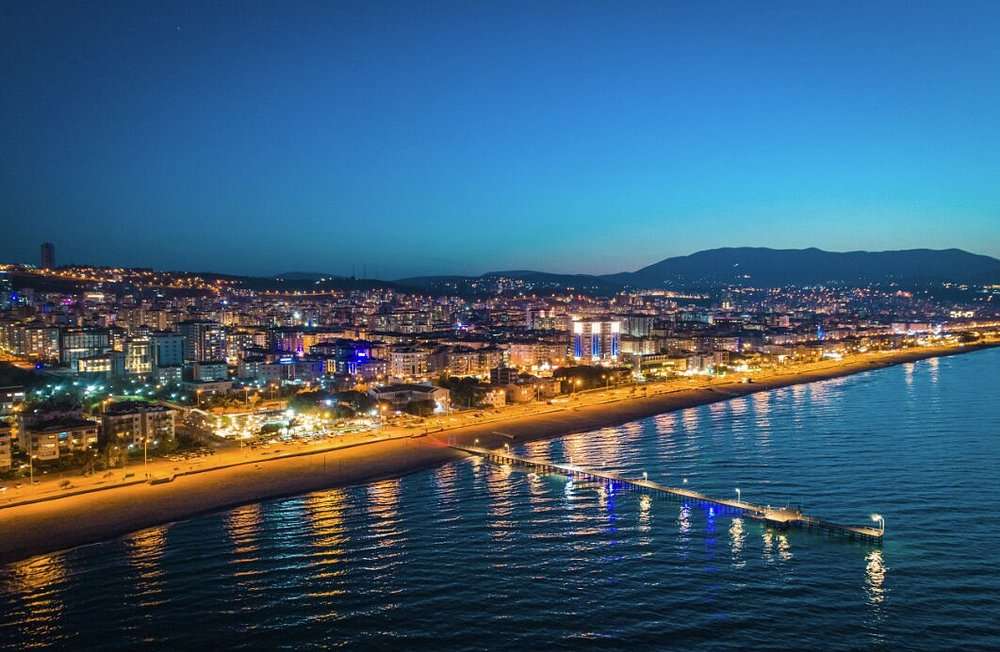
Atakum Beach (including the section also known as East Park) is one of the longest and most popular walking and relaxation areas along the Black Sea coast. Stretching along Adnan Menderes Boulevard, the coastline features cafes, restaurants, piers, children’s playgrounds, bike paths, and spacious resting areas. The beach offers opportunities for swimming as well as walking, relaxing, or enjoying the view in relatively cool weather.
Moreover, East Park is not just a seaside area but also a large recreational zone equipped with green landscaping, sports courts (basketball, football), children’s playgrounds, and cafes. One part of the park also provides access to the Bandırma Ferry Museum—the place where the epic of the Balkan War and the War of Independence began—making it an important destination both naturally and historically. Within the rapidly developing tourism and urban life of Atakum, it stands out as an ideal area for both tranquil nature breaks and social activities.
4. Amisos Hill – A historic hill famous for its panoramic views of Samsun
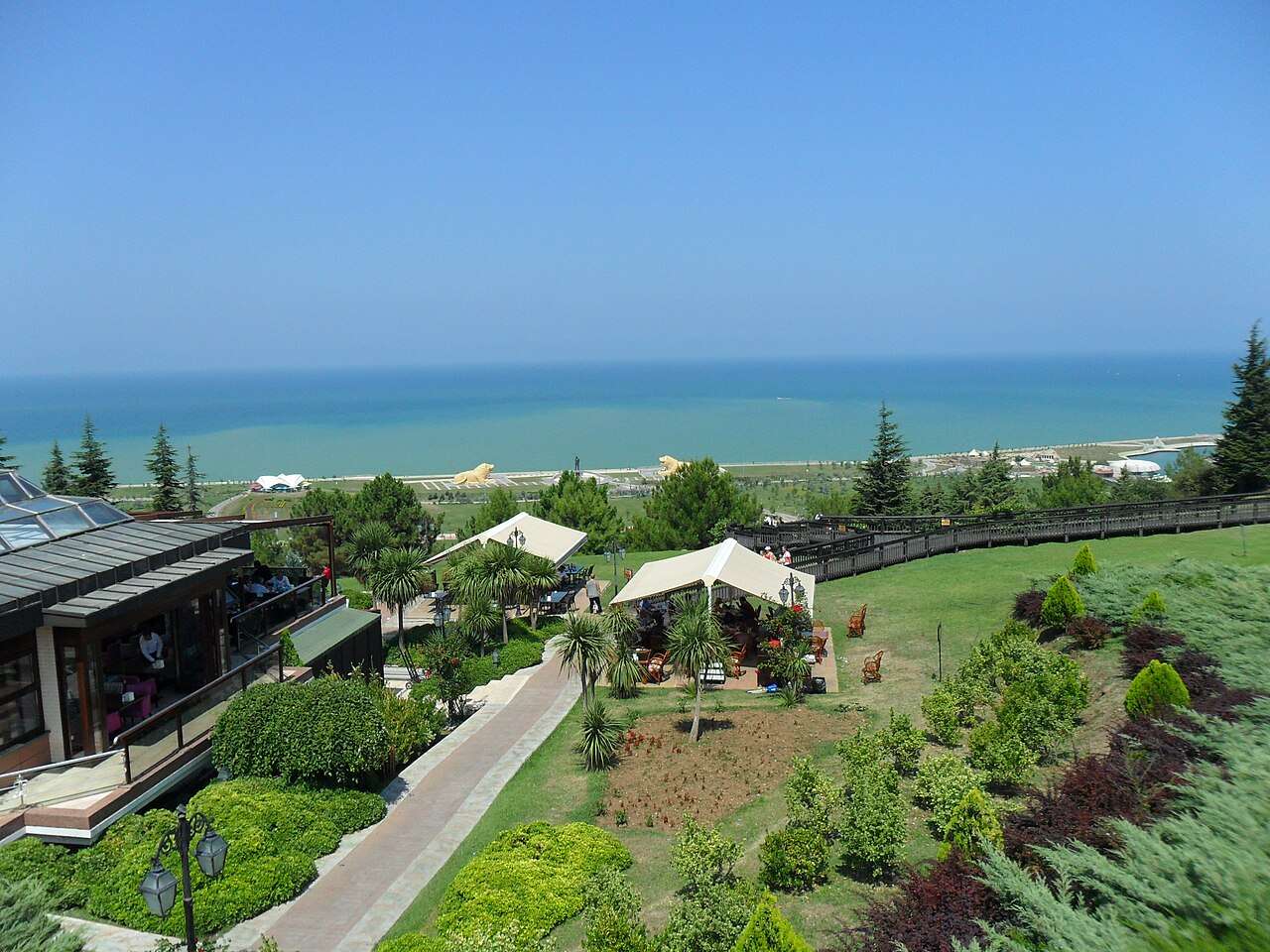
Amisos Hill, also known as Amisos Hill or Baruthane Hill, is located in the İlkadım district of Samsun, along the Black Sea coast, and combines both historical and natural beauty. The area is established upon the ancient city of Amisos. Colonized by the Milesians in the 7th century BC, the hill—Toraman Hill in the form of a high-ground acropolis—contained city walls, residential areas, and necropolises. Excavations on Amisos Hill uncovered the “Amisos Treasure,” which is believed to belong to the kings of Pontus and includes a tomb filled with gold jewelry and valuable artifacts. These treasures are currently exhibited at the Samsun Archaeology and Ethnography Museum.
The hill offers a stunning view: the Black Sea and the Samsun city skyline can be seen spectacularly from above. A cable car line makes access to the hill easier. Completed in 2005, this cable car connects West Park to Amisos Hill along a 320-meter route and carries visitors to the summit in a short time. Open year-round, Amisos Hill provides visitors with both a relaxing and historically rich trip through panoramic walking paths, restaurant and café areas, and a small archaeological museum.
5. Samsun Archaeology and Ethnography Museum – Exhibition of artifacts from ancient civilizations
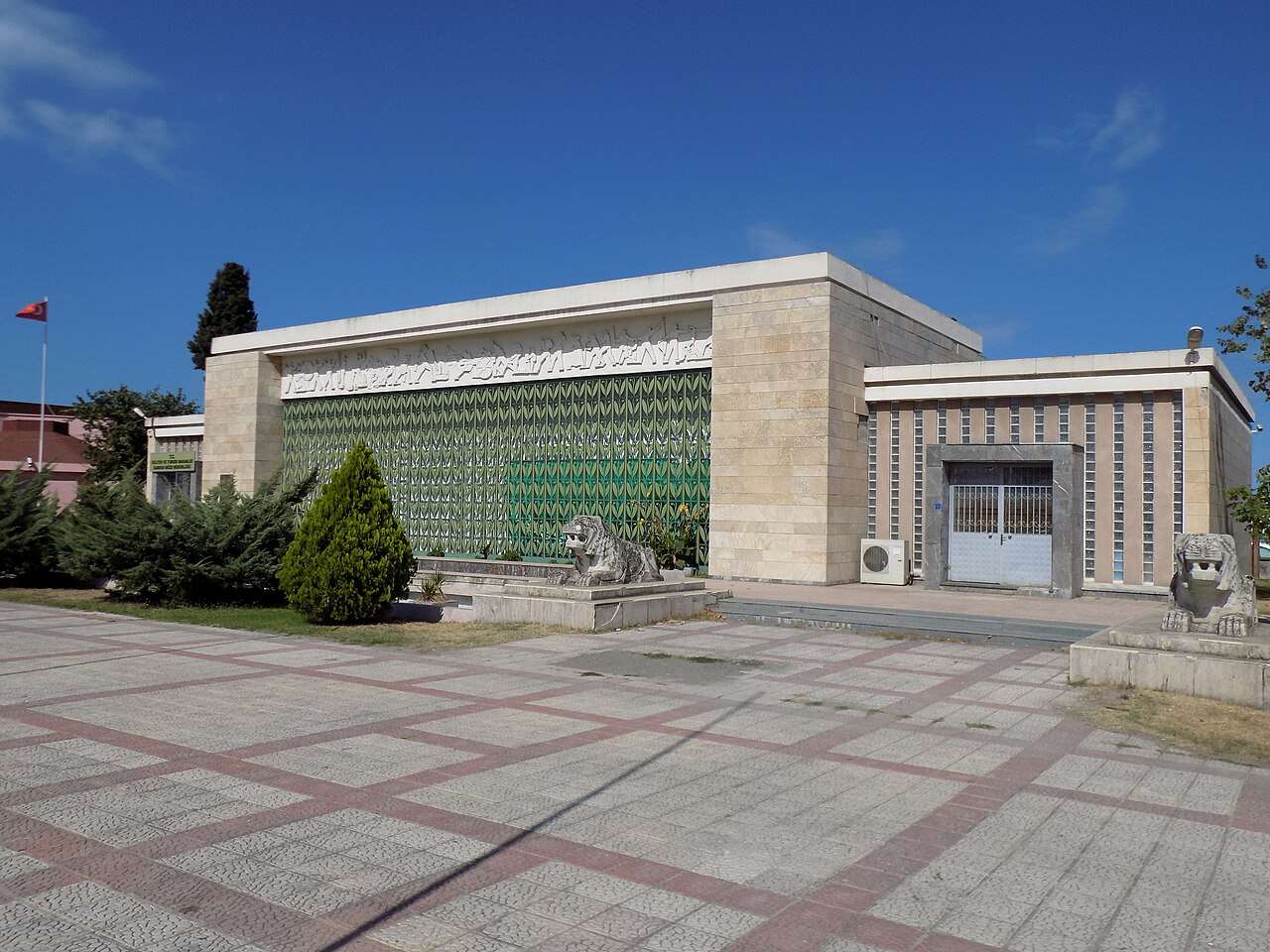
The Samsun Archaeology and Ethnography Museum is located in the Kale neighborhood of Samsun. Its construction began in 1976 and it was opened to visitors on May 19, 1981. The museum houses a wide collection in both its Archaeology and Ethnography sections. The archaeological hall features artifacts ranging from the Chalcolithic Age to the Roman period, such as bronze spearheads, skulls with signs of surgery, and a bronze statue of a nude athlete. The ethnography section displays traditional cultural items including embroidered dresses (bindallı), handwritten Qurans, ornaments, weapons, kitchenware, carpets, and rugs. In the museum garden, architectural pieces from the Classical, Roman, Byzantine, and Ottoman periods—such as sarcophagi, steles, and pithoi—are exhibited.
The new museum building, located in Liman neighborhood (Atatürk Boulevard No:99), was opened on March 13, 2024. It features approximately 15,000 m² of indoor space, with modern facilities such as conference halls, a children’s museum, laboratory, library, and cafeteria. The museum also has a rich inventory and visitor count: as of 2023, approximately 7,165 artifacts are on display (the number varies between ~6,865–6,916 depending on sources), and around 10,956 coins are part of its collection. In this regard, it stands as one of the largest and most comprehensive cultural centers in the Black Sea Region.
6. Atatürk Park and Statue of Honor – A symbol of the values of the Republic

Atatürk Park and the Statue of Honor are located in the İlkadım district of Samsun, near the Black Sea coast, and are among the symbolic structures representing the values of the Republic. Atatürk Park is one of the city’s oldest and most central parks, offering a peaceful resting area surrounded by palm trees, ornamental pools, and flowers. Situated at the heart of this park, the Statue of Honor symbolizes Mustafa Kemal Atatürk’s arrival in Samsun on May 19, 1919, marking the beginning of the Turkish War of Independence. The monument was commissioned in 1927 by Austrian sculptor Heinrich Krippel, cast in bronze in Vienna between 1928 and 1931, and officially unveiled on January 15, 1932.
The structural features of the monument are also quite impressive: Atatürk is depicted on a rearing horse in a 4.75-meter bronze statue; with its stone pedestal, the total height reaches 8.85 meters. The sides of the pedestal display reliefs that depict the nation’s struggle during the War of Independence—for example, people carrying ammunition beside a boat on a dock, and a cannon cart. Inscriptions on the pedestal include references to Atatürk’s landing in Samsun and the monument’s dedication by the public on October 29, 1931.
This statue is not just a sculpture but a symbol of the foundation struggle of the Republic of Turkey and holds a very significant place in Samsun’s identity. Atatürk Park offers visitors a chance to feel this national importance while enjoying a peaceful walk and relaxation in the city center.
7. Samsun Grand Mosque – A historic Seljuk-era mosque, located next to the clock tower
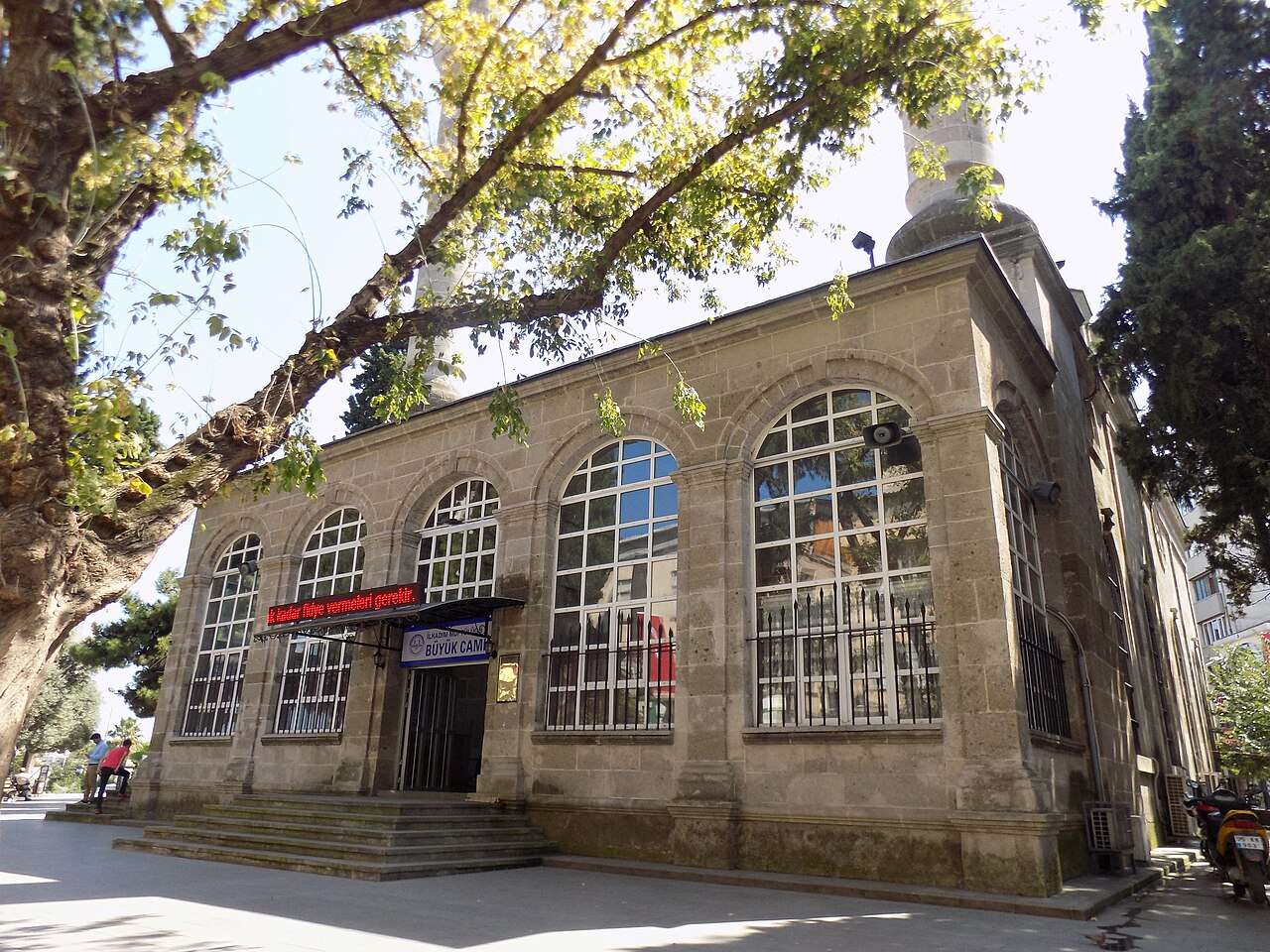
Samsun Grand Mosque (Great Mosque), located in the Kale neighborhood of the İlkadım district, stands next to Saathane Square and is a significant historical structure. It was originally built in the 14th century using wooden materials by the Seljuk commander Hıdır Bey, but this structure was completely destroyed in a major fire in 1869. It was then rebuilt between 1884 and 1886 using cut stone under the leadership of Hacı Ali from Batumi and became known as the Valide Mosque, as the mother of Sultan Abdülaziz contributed to its restoration.
The mosque is built from cut stone within a large courtyard and features architectural elements such as a central dome on an octagonal drum, floral and geometric decorations, and two minarets each with a single balcony. The structure reflects the local architectural tradition rooted in the Seljuk period while also incorporating the aesthetic sensibilities of the Ottoman era. Inside, the wooden craftsmanship, calligraphy, and stone-carved mihrab and minbar draw attention. The mosque is also adjacent to the Samsun Clock Tower and Saathane Square, making it one of the city’s key historical landmarks.
8. Amazon Village – Reconstructions representing Amazon culture
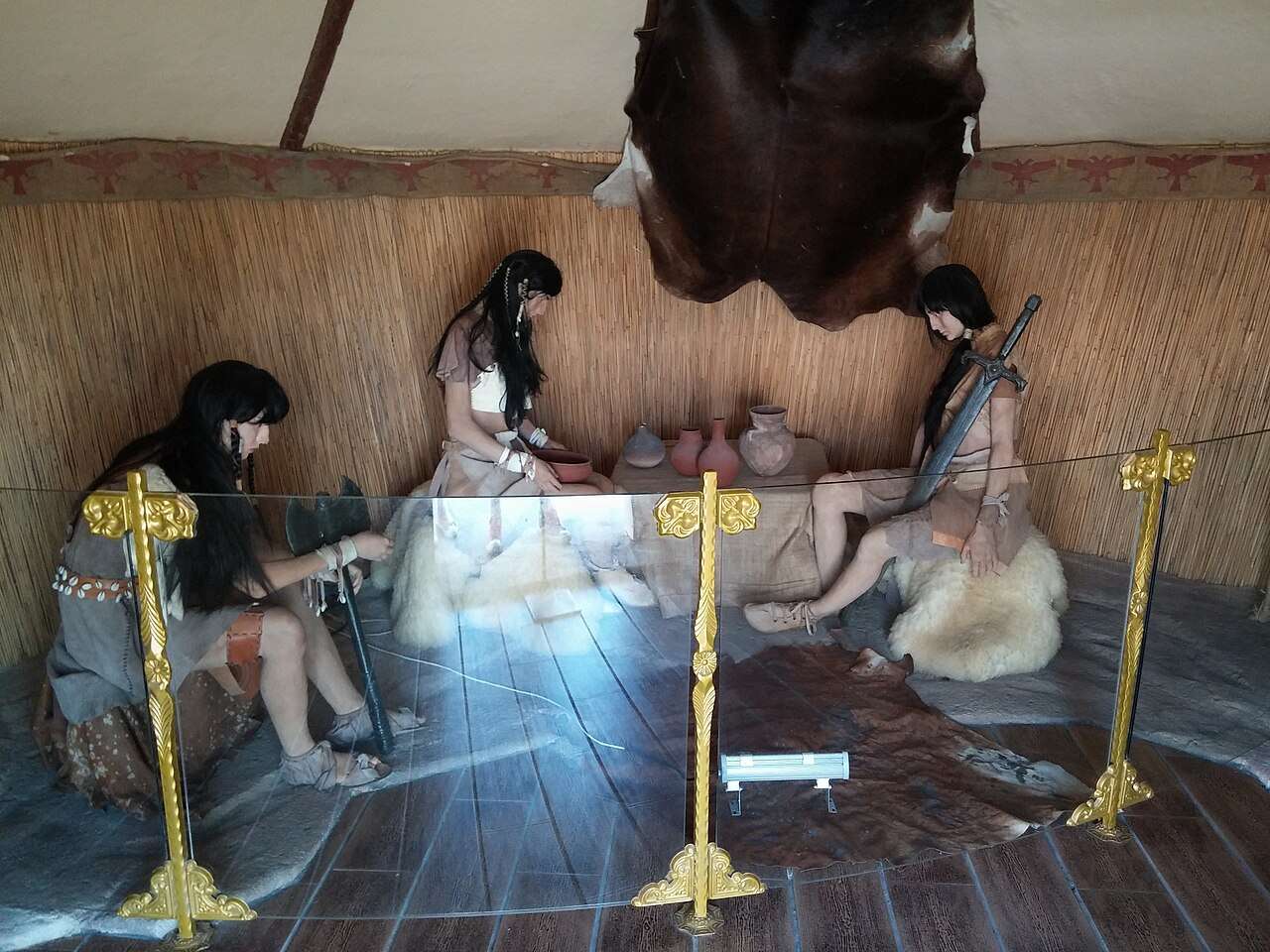
Amazon Village – Located on Amazon Island within Samsun’s West Park, Amazon Village is a special open-air cultural area of approximately 2.5 decares, dedicated to the legendary Amazon women believed to have lived along the Black Sea coast in ancient times. The village was established in collaboration between Samsun Metropolitan Municipality and Ondokuz Mayıs University. It features around 20–24 silicone wax statues, reliefs, tents, and cave structures; these statues are detailed with realistic prosthetic eyes and human hair. References to Amazons in the works of Plato, Socrates, and Homer, as well as Hittite tablets of Anatolia, create a bridge between mythology and historical heritage.
Visitors to this themed village encounter reconstructions of the daily lives of Amazon women, weapons (such as bows, arrows, and axes), and tent settings. The park also includes giant lion statues, Amazon warrior figures, a café, and viewing platforms. The open-air museum is open every day of the week, typically between 08:30–17:00 throughout the year (on some days it may open later due to midday cleaning). Entrance fees are around 5₺ for adults and 2₺ for students (Museum Pass is not valid).
9. Kızılırmak Delta Bird Sanctuary – Ideal for birdwatching, Ramsar site
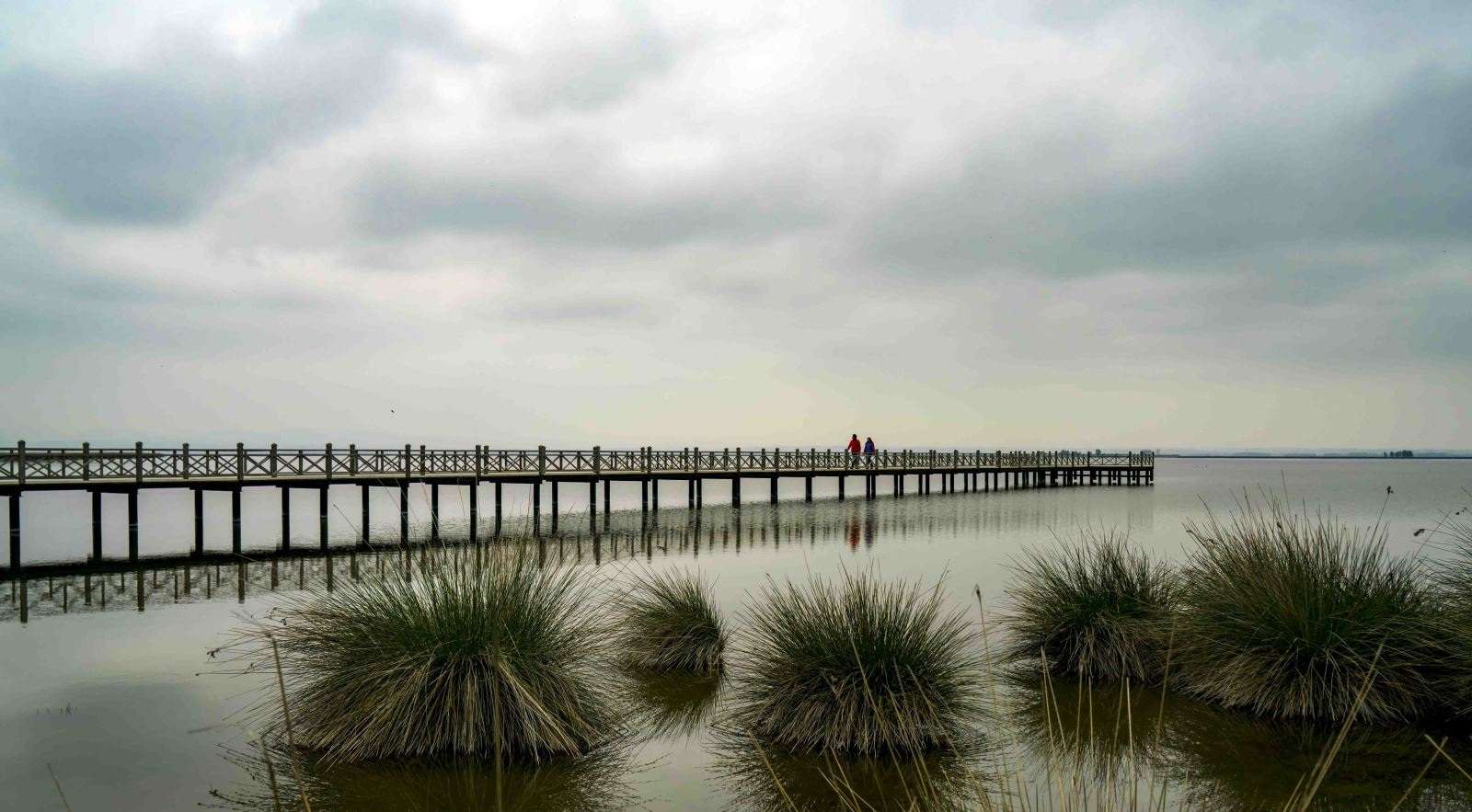
Kızılırmak Delta Bird Sanctuary, located within the districts of Bafra, Alaçam, and 19 Mayıs in Samsun, is one of Turkey’s largest wetland areas, covering approximately 56,000 hectares. A portion of it holds Ramsar protection status, making it an internationally significant natural site. Formed by the alluvial deposits of the Kızılırmak River, the delta consists of around 20 lakes, marshes, and reed beds across a vast plain. Listed in the European Important Bird Areas Inventory with three key criteria, 21,700 hectares of the delta are under strict protection within the scope of the Ramsar Convention.
As a unique birdwatching destination, the delta hosts around 140 of the 362 bird species recorded in Turkey, many of which breed there. Several endemic or endangered species have been identified, including the White-tailed Eagle, Dalmatian Pelican, Black Stork, and Black-headed Bunting. Facilities for visitors include birdwatching towers, observation centers, walking and cycling paths, water activities such as canoeing, camping areas, and ideal conditions for nature photography. Especially at sunrise and during migration seasons, the delta offers rich opportunities for observing thousands of migratory birds.
The delta area also supports wildlife such as wild horses and water buffalo herds, which live freely and contribute to the region’s visual and biological diversity as unique components of the ecosystem. As part of conservation efforts, entry is only allowed by bicycle or electric vehicle, and the area is monitored through camera systems and patrolled by gendarmerie.
10. Tekkeköy Caves Archaeological Valley – Caves dating back to the Paleolithic era
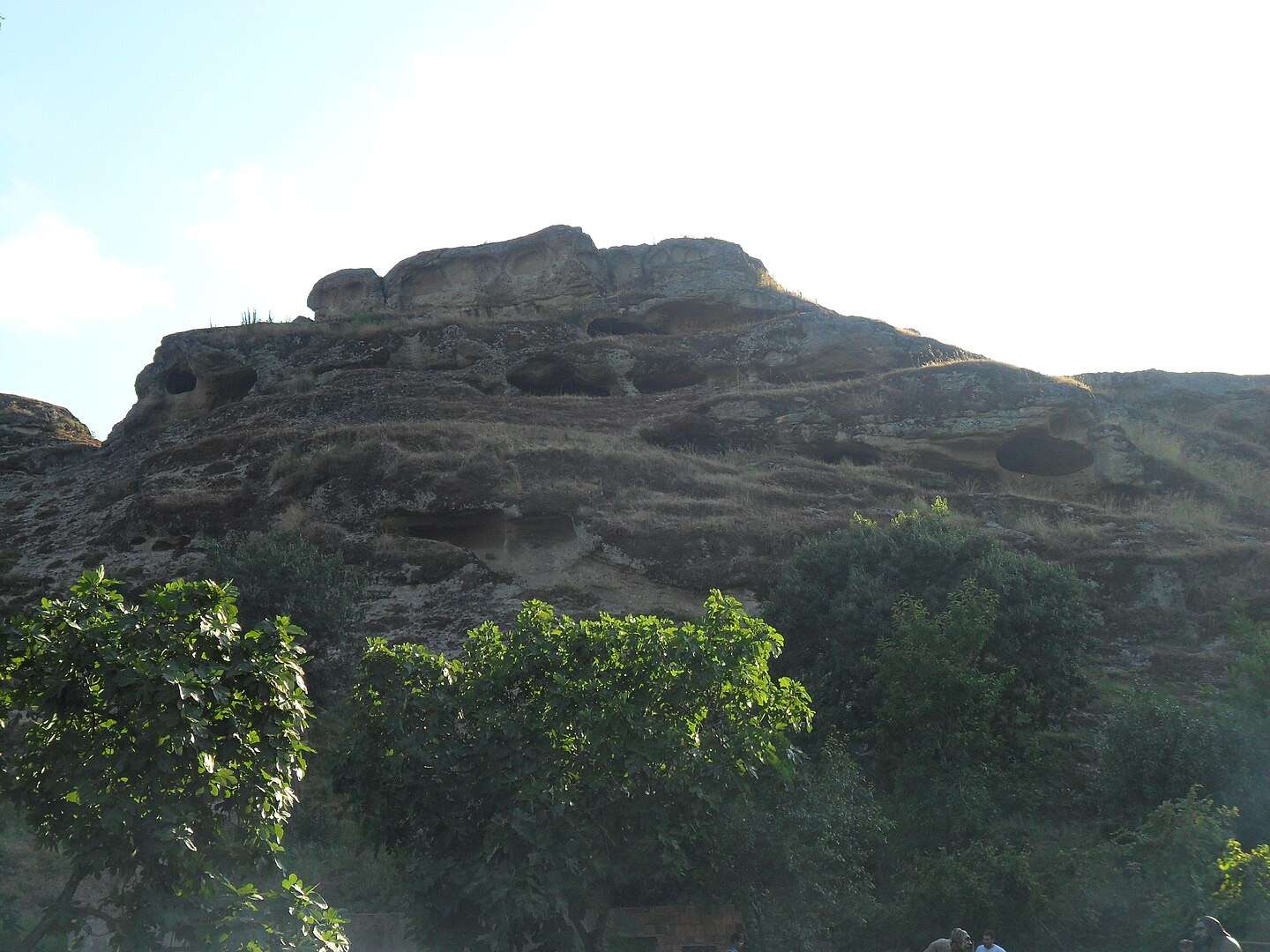
Tekkeköy Caves Archaeological Valley is a significant archaeological site located in the Tekkeköy district of Samsun, shedding light on the depths of human history. Excavations in the area have revealed a multi-layered settlement dating from the Paleolithic Age (around 60,000 BC) to the Bronze Age, including stone tools such as arrow and spearheads, axes, as well as Bronze Age artifacts like pottery, earrings, and bracelets. Remains of a Phrygian fortress and traces of a ceremonial road from the Hittite period have also been identified within the valley.
The site was placed under protection as a registered archaeological area in 1977 and was made accessible to visitors after renovations in 2013. Of the total 360,000 m² area, about 96,000 m² is open to visitors through walking paths, viewing terraces, and wooden platforms. The valley also features a Museum House where replicas of the excavation finds are displayed—making it one of the first imitation museums in Turkey.
The site is not only of interest to history enthusiasts but also offers opportunities for picnicking, walking, and relaxing in nature. Attracting around 300,000 visitors in the past year, the area demonstrates strong tourism potential. Located about 14 km from the town center, the valley is one of the rare settlements in the world that preserves traces of layered human life, standing out as a prominent archaeological and natural heritage site of both Samsun and Turkey.
11. Lake Ladik – A scenic lake surrounded by natural beauty
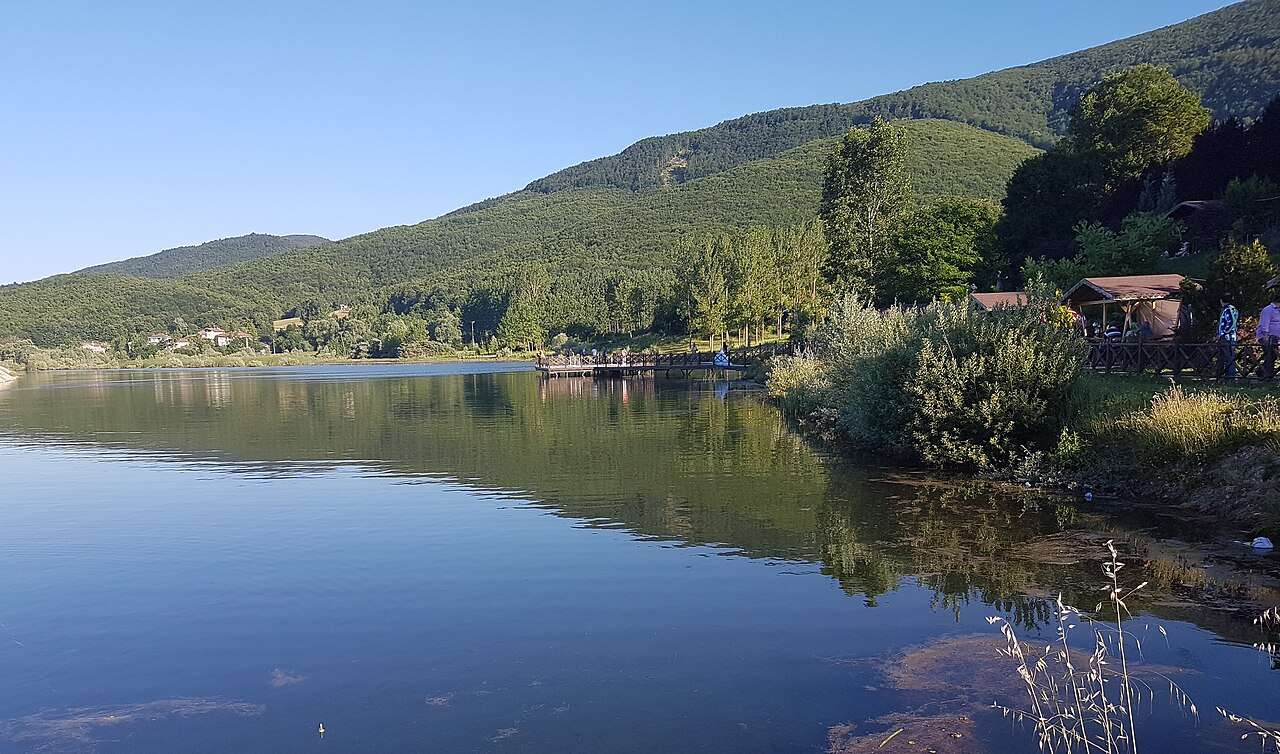
Lake Ladik (within the boundaries of Ladik district in Samsun) is a tranquil freshwater lake nestled in nature. It covers an area of approximately 870 hectares and is surrounded by mountains and forests, which enhance its scenic appeal. The lake also features floating islets (peat islets), rare formations that add unique aesthetics and increase its natural value.
Ecologically rich, Lake Ladik is home to various fish species such as northern pike, freshwater perch, tench, carp, and rudd, which contribute to the development of fishing tourism in the region. Additionally, the lake serves as a habitat for many bird species including night heron, little egret, purple heron, black stork, mallard, black-winged stilt, common redshank, green sandpiper, black-headed gull, Mediterranean gull, and common tern, making it a notable birdwatching area.
The lake stands out not only for its natural beauty but also for its recreational and nature-based activity opportunities. Around the lake, there are picnic areas, walking trails, observation towers, municipal cafés, and even bungalow accommodations designed for visitors. Water sports such as water skiing, surfing, and sailing races are also held here. Especially at sunrise and sunset, the lake offers unforgettable moments with its peacefulness, serenity, and visual charm.
12. Havza Atatürk House Museum – Atatürk’s working headquarters and living environment
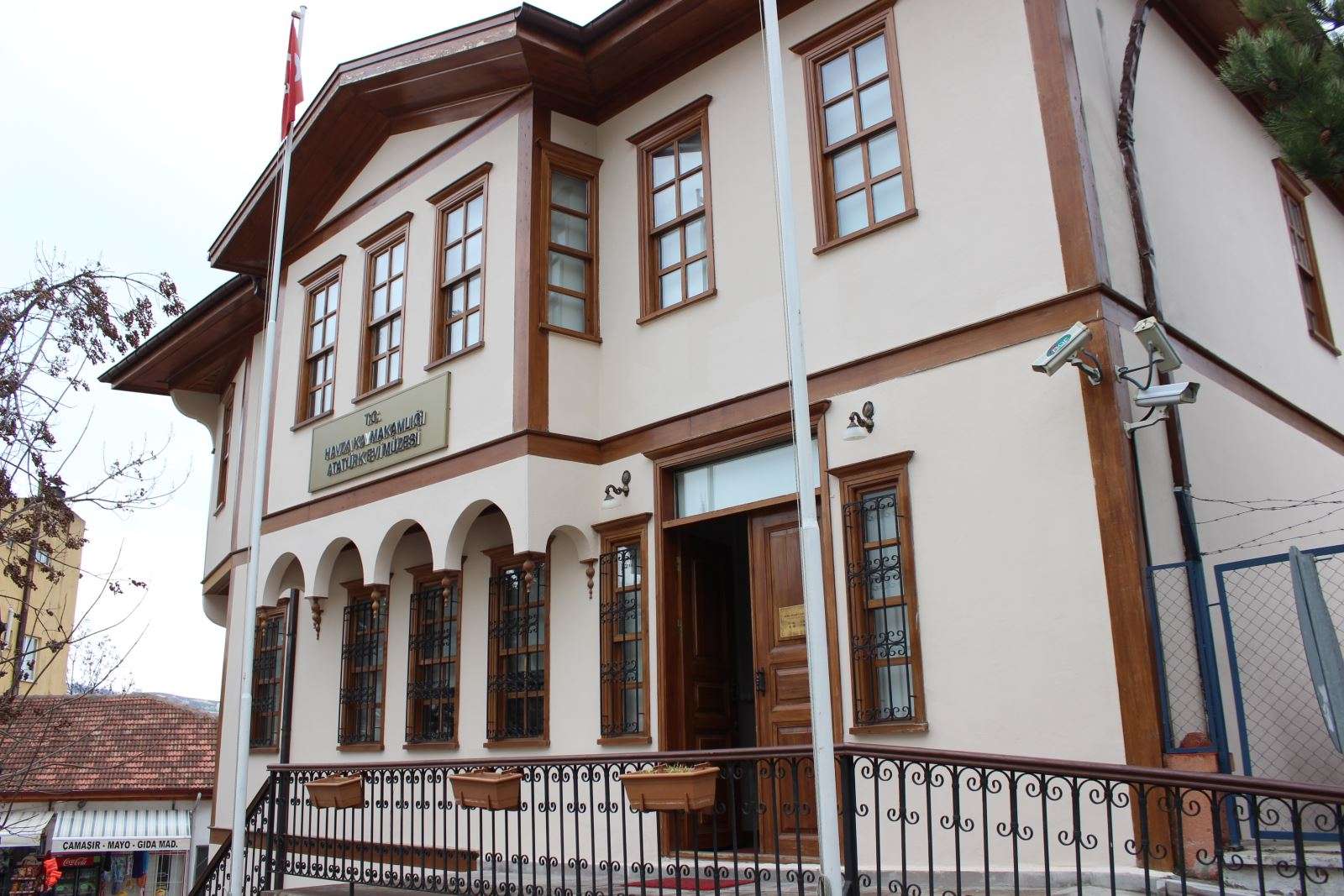
Havza Atatürk House Museum is located in the Havza district of Samsun, in the building of the Mesudiye Hotel, where Mustafa Kemal Pasha stayed between May 25 and June 13, 1919, and used as the headquarters of the 9th Army Inspection. This building holds great historical importance as the first headquarters of the National Struggle. It was registered as an immovable cultural asset in 1980 and was restored and turned into a museum in 2002.
The museum building consists of a ground floor and two upper floors. On the first floor, there are Atatürk’s office (Gazi Room) and bedroom. These rooms display Atatürk’s desk, telegraph device, the first presidential emblem, and original items from that period. Also on the first floor is the Havza Room, where handwritten documents by Atatürk—such as a list of 12 questions and the Havza Circular—along with photographs related to the National Struggle are exhibited. The upper floor features rooms dedicated to surrounding provinces (such as Amasya, Erzurum, Sivas, and Ankara) and sections describing significant events that occurred in those cities.
The museum is open every day of the week, from 09:00–18:00 in summer and 09:00–17:00 in winter. Admission is free.
13. Asarkale & Rock Tombs – Historical castle ruins and rock-cut tombs
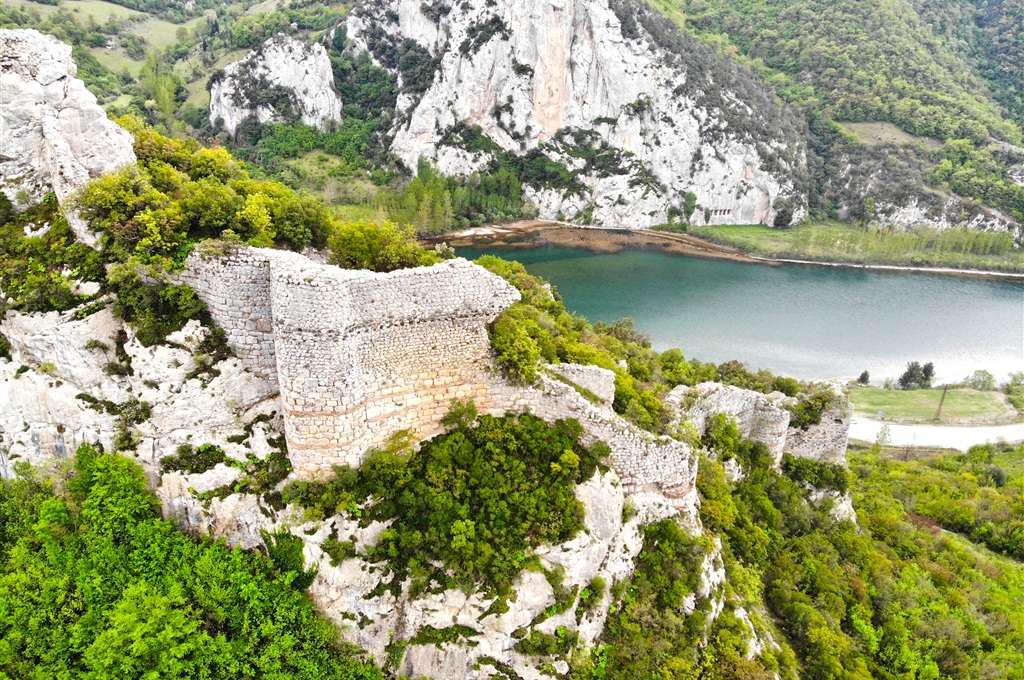
Asarkale is a Hellenistic-era (around the 3rd century BC) defensive castle built on a large rock formation, located about 30 km from the Bafra district of Samsun, along the shore of the Kızılırmak Derbent Dam Lake. The castle is accessed through a difficult route involving hidden passages and internal stairways. Although the structure has undergone various repairs during the Roman, Byzantine, and Ottoman periods and now stands in ruins, it still retains architectural remnants—such as carved cistern wells and what are believed to be cellar or torture chambers.
Adjacent to the castle, three rock-cut tombs situated around the dam lake were carved with characteristics typical of Greek architecture from the Paphlagonian period. The area attracts visitors by offering both natural beauty and historical value; the dam lake, steep cliffs, and the nearby Akalan Waterfalls add to the site’s visual richness. In 2024, archaeological excavations were launched in the area by Ondokuz Mayıs University and relevant institutions, aiming to uncover artifacts from periods ranging from the Hellenistic era to the Ottoman era.
14. Çarşamba Historical Bridge – A modest bridge bearing traces of historical heritage
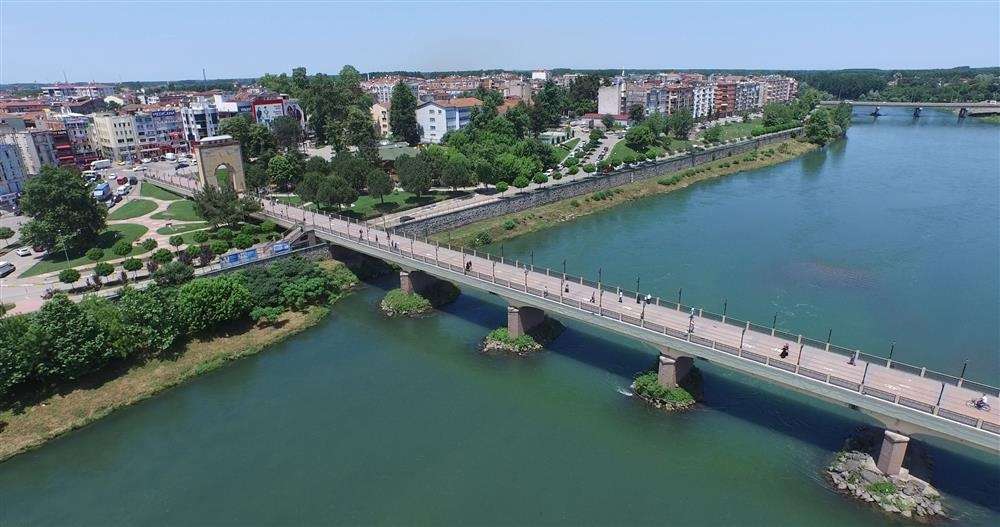
The Historical Çarşamba Bridge is located over the Yeşilırmak River in the Çarşamba district of Samsun and stands out as one of the city’s landmarks. Originally built from wood in 1890, the bridge served the need to safely connect the people of the region across both banks. However, as the wooden structure became insufficient, a more durable bridge was approved by Mustafa Kemal Atatürk in the 1930s and the new bridge was opened in 1931. This reinforced concrete bridge, with 10 arches and 12 piers, is approximately 270 meters long and was once the longest bridge in Turkey.
Having undergone various maintenance and restorations over the years, the bridge served both vehicle and pedestrian traffic until 2007. Today, it has been converted into a pedestrian-only walking path. As a symbol of Çarşamba, the bridge is not just a transportation structure but also a symbol of social unity in the region and is even featured in the emblem of the local municipality. Open to visitors year-round for free, it is an ideal spot to view the beauty of the Yeşilırmak River and to feel the spirit of Çarşamba.
15. Bafra Region: Asar Castle, Ali Bey Fountain, Bafra Archaeology and Ethnography Museum – A district rich in history
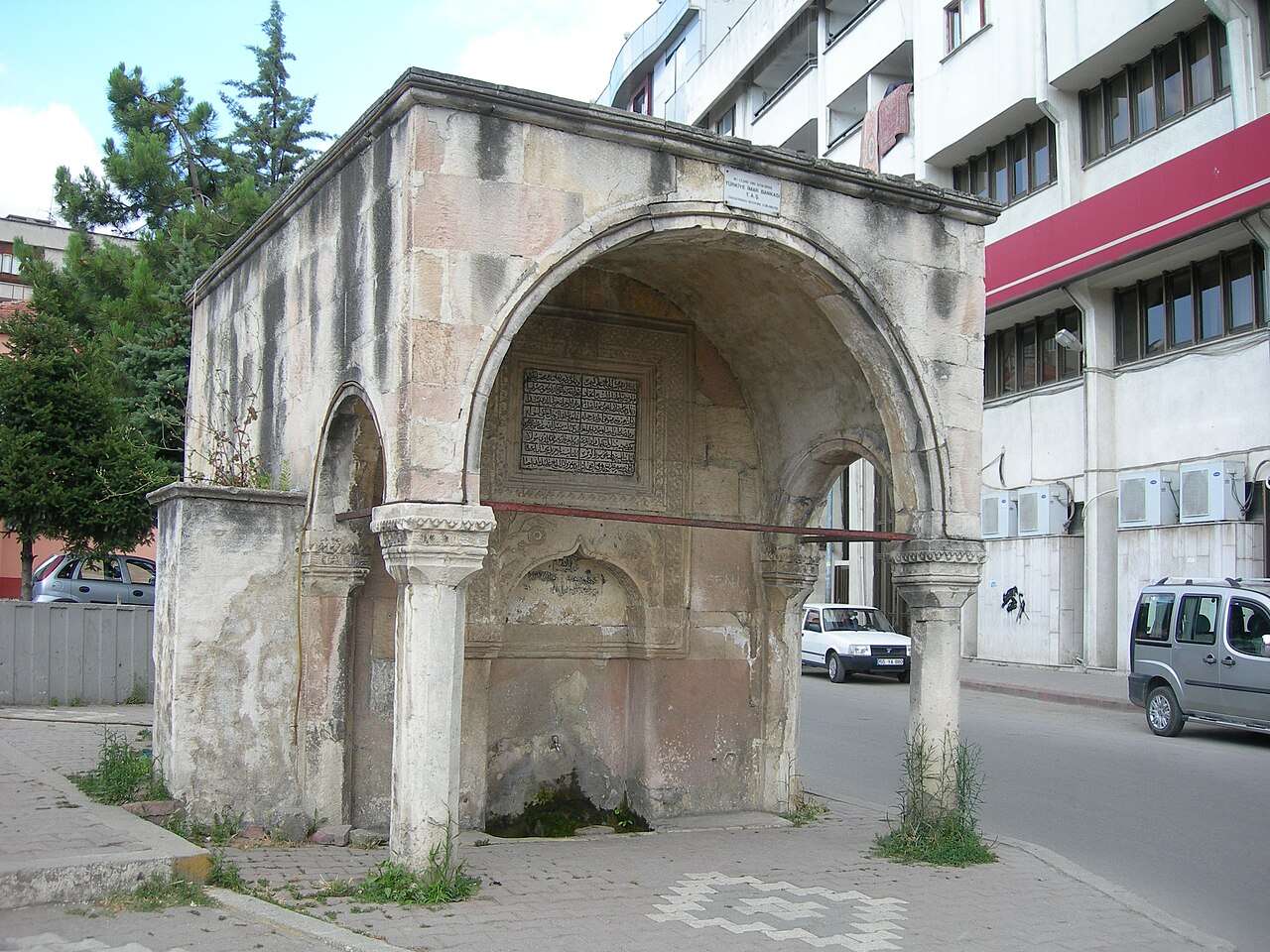
The Bafra Region stands out with its historical ruins, ancient artifacts, and vibrant cultural heritage. Asar Castle, located in the impressive natural setting of the Kızılırmak Valley, is a historic ruin that has been used for defensive purposes since the 1st millennium BC. The castle is accessed via hidden passages and stairways; in its surroundings are Hellenistic-era rock tombs, some of which are located on the opposite bank of the river. This area offers new discoveries for history enthusiasts through both its natural panorama and the archaeological excavations conducted there in 2024.
The Bafra Archaeology and Ethnography Museum, located in the town center, is housed in a building dating back to 1858. While the ground floor of the building serves administrative purposes, the entrance floor displays ethnographic artifacts reflecting local traditions; the upper floor exhibits archaeological pieces from the İkiztepe excavations and other regional civilizations. The museum presents a wide-ranging collection of approximately 1,520 artifacts spanning from the past to the present. Additionally, the Ali Bey Fountain—located in Cumhuriyet Square and built in 1751—is known for its detailed stone craftsmanship and stands out as the oldest fountain in the area with significant visual appeal.
16. Derbent Dam (Bafra) – Lake, picnic, and nature
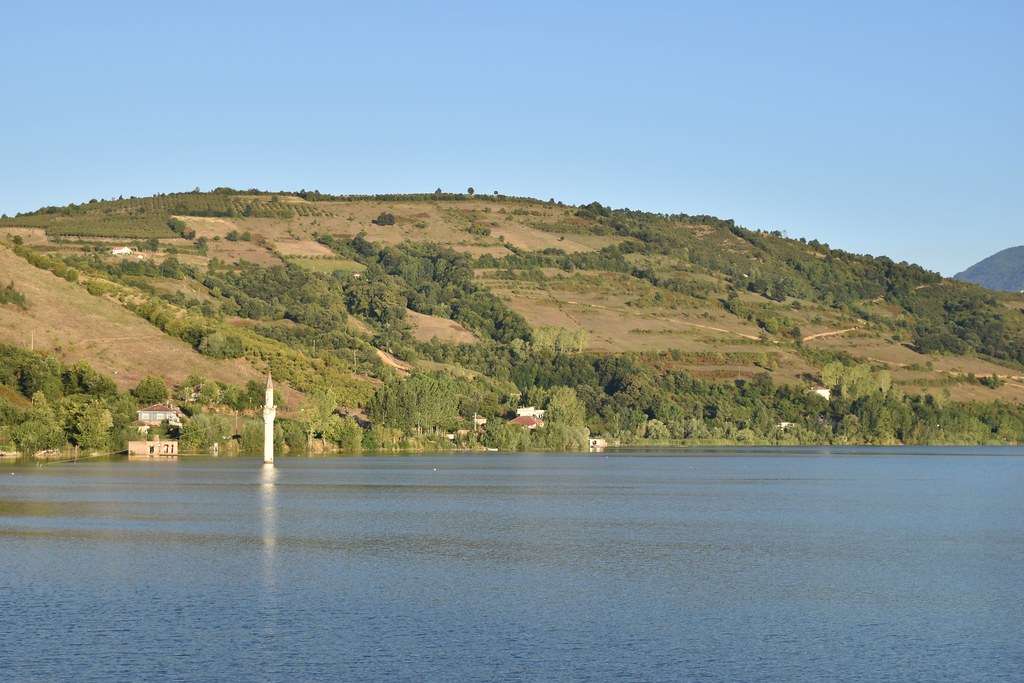
Derbent Dam (Bafra) is a rock-fill type dam located on the Kızılırmak River in the Bafra district of Samsun. It was constructed between 1984 and 1990. The dam has a height of approximately 33 meters, a lake area of 16.5 km², and a volume of 213 hm³ at normal water level. Designed primarily for energy production, the dam has an installed capacity of approximately 58 MW and an annual generation of 257 GWh.
Derbent Dam and its reservoir are not just technical structures but also peaceful recreational areas intertwined with nature. Around the dam, there are picnic spots, recreational areas, and shores suitable for fishing. According to Bafra Municipality, people especially enjoy weekends here by fishing with rods, relaxing, or simply admiring the scenery.
The region offers a visual feast for visitors; drone footage highlights the impressive view of the dam lake and the various shades of green in the landscape. During the construction of the dam, about 200 structures in Boğazkaya Neighborhood were submerged, and the only remaining structure, a “sunken minaret,” now standing in the water, has become a popular site for photography and tourism. It is anticipated that the area will gain further value in terms of nature tourism, with plans for the development of tourist infrastructure such as restaurants, fish farms, and accommodation facilities.
17. İkiztepe Mound (Bafra) – An area of archaeological significance
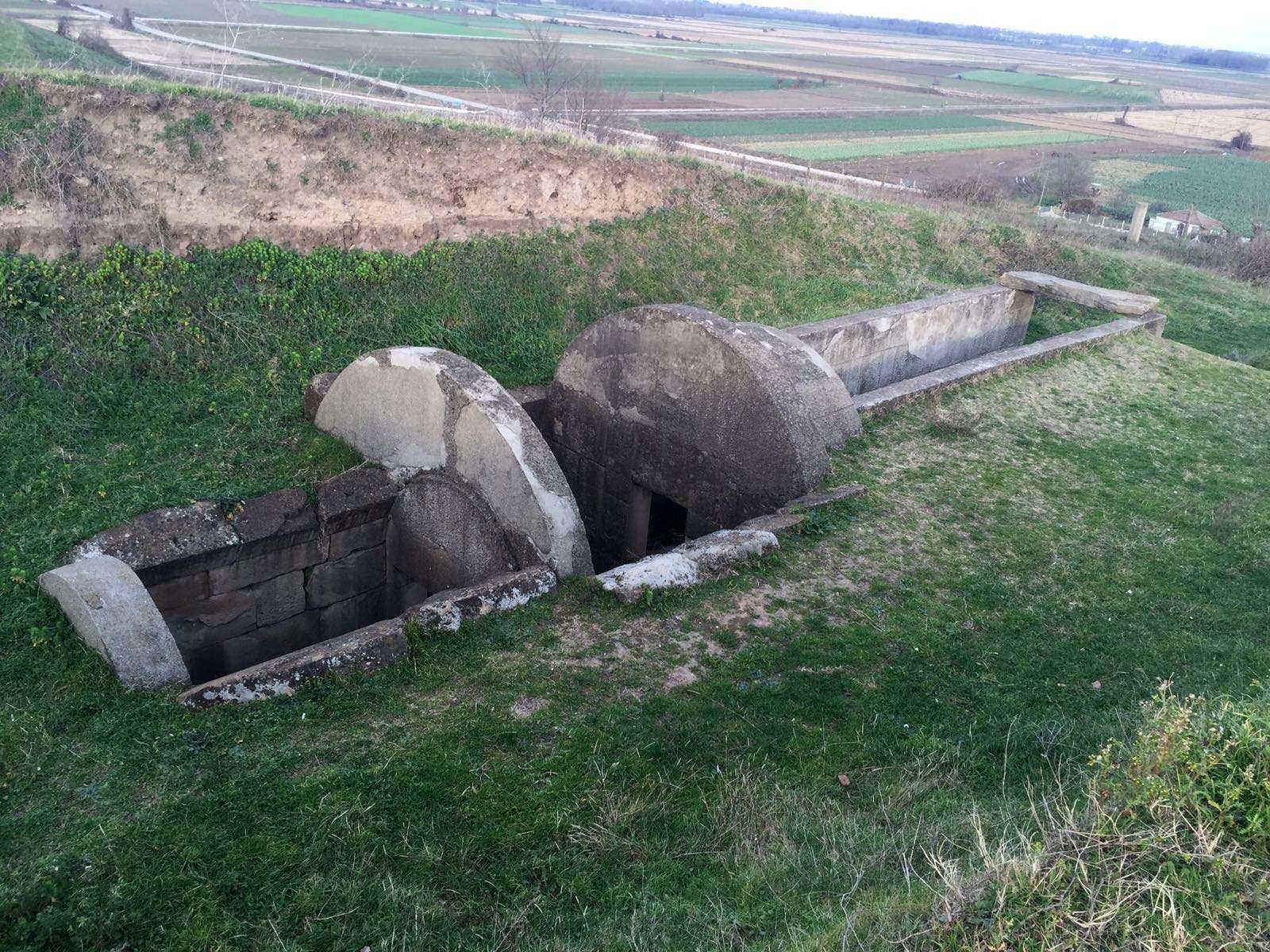
İkiztepe Mound, located in the Bafra district of Samsun, is a historical settlement area formed by four mounds (Mounds I–IV), situated approximately 20 meters above sea level. Covering a total area of about 66 decares, this mound features cultural layers ranging from the Late Chalcolithic Age (4300–3200 BC) and the Early Bronze Age (3200–2100 BC) to the transitional periods of the Hittite era and the Hellenistic period. Archaeological excavations have revealed traces of an uninterrupted settlement spanning roughly 2,500 years. Notably, around 690 skeletons found in the burial area make it one of the largest mass cemeteries discovered in Anatolia.
Excavations began in 1974 and have continued in various phases. Since 1981, the digs have been conducted with the support of Istanbul University and the Ministry of Culture, resuming intensively again in 2021. To date, approximately 15,000 artifacts have been unearthed, including around 5,000 loom weights related to weaving, bronze tools, terracotta objects, and metal items. These findings suggest that the region was an early center of advanced textile production and metalworking. Additionally, skulls showing signs of surgical procedures (trepanation) have been discovered in some graves, which hold significant value in the history of medicine.
18. Nebiyan Mountain and Forests (19 Mayıs district) – Ideal for nature exploration
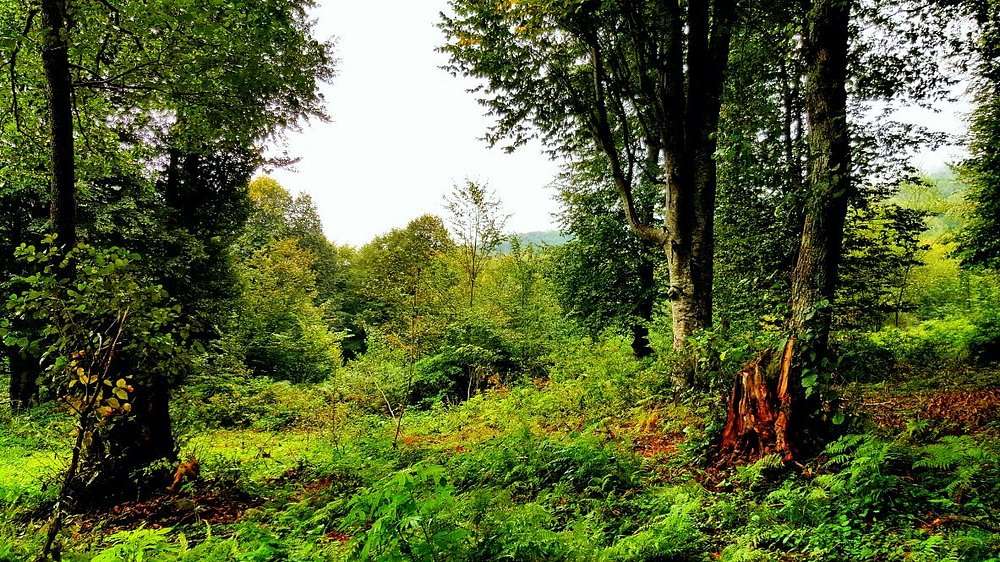
Nebiyan Mountain and Forests (Samsun’s 19 Mayıs district) – An ideal route for nature explorers 🌲
This majestic mountain, with an elevation of 1,224 meters, is located approximately 24–30 km south of the 19 Mayıs district and has been declared a “nature tourism area” by the Ministry of Culture and Tourism. Surrounded by dense forests, highlands, and streams, Nebiyan is a natural wonder that serves as a scenic terrace of the Black Sea.
The mountain not only offers natural beauty but is also a paradise for adventure enthusiasts. It hosts a wide range of outdoor activities such as hiking, mountaineering, cycling, highland tourism, paragliding, and photo safaris. Especially in autumn, the forests are covered in vibrant shades of yellow, orange, and red, creating a breathtaking visual display. With a different charm in every season, Nebiyan is an oxygen-rich environment and a peaceful getaway destination—perfect for escaping the city.
19. Ayvacık Dam Lake and Waterfalls – Nature walks and scenic water views
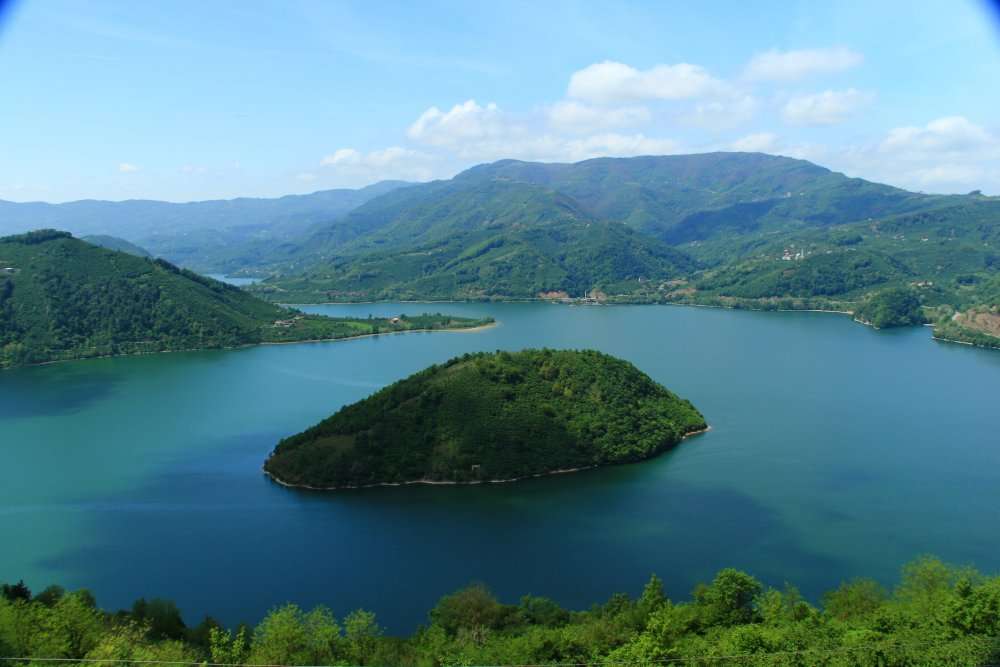
Suat Uğurlu Dam Lake, located in the Ayvacık district of Samsun (along with the other major lake, Hasan Uğurlu Dam), is a natural beauty surrounded by lush forests, offering a calm and peaceful environment. Along the lake shore, there are walking paths, viewing terraces, and suitable areas for canoeing, boat tours, and water sports. The sound of flowing water, bird calls, and shades of green provide visual relaxation, creating an ideal setting for both photographers and nature lovers.
Around Ayvacık, waterfalls such as Yeşilpınar, Kikinin, Çağlayan, and Çamalan—known as the “Paradise Waterfalls”—offer excellent routes for hiking enthusiasts. For example, Yeşilpınar Waterfall is located about 15 km from the town center and cascades from a height of 50 meters. To reach the waterfall, visitors follow a 1.5 km forest trail, which is often used for “oxygen-nature walks” and similar activities.
20. Dündar Hill (İlkadım) – A hill with city views
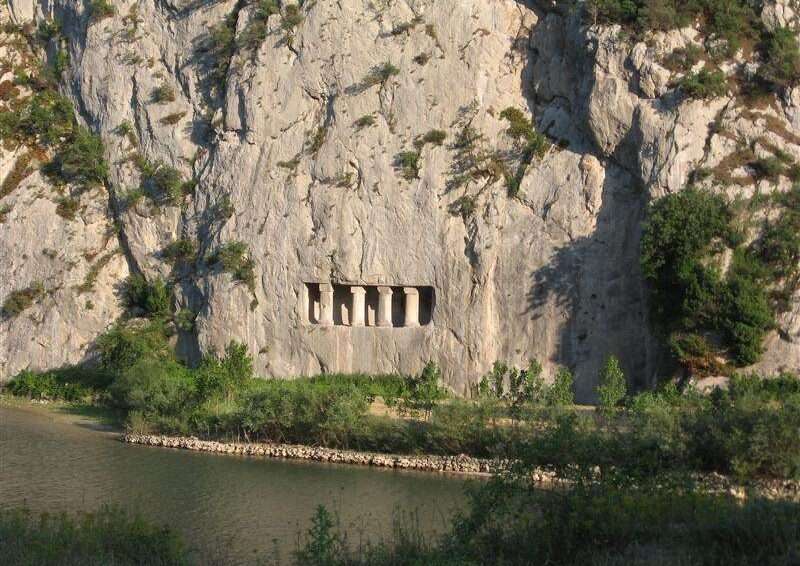
Dündar Hill, also known as Öksürük Hill, is a mound approximately 15 meters high, located in the İlkadım district of Samsun. It is easily accessible, situated only about 3 km from the city center. The hill gets its name from a saint’s tomb believed to cure children’s coughs. Excavations have revealed cultural layers ranging from the Chalcolithic period to the Hittite era; handmade ceramics, terracotta seals, bone artifacts, and various structures have been uncovered.
Dündar Hill is not only of historical significance but also serves as a natural viewpoint. From the top, visitors can enjoy a pleasant walk with a panoramic view of the Samsun cityscape. With these features, it offers both a brief nature exploration and an archaeological stop, providing cultural depth through settlement traces from different periods. It is thus one of the rare sites that combine archaeology and nature near the city center.
